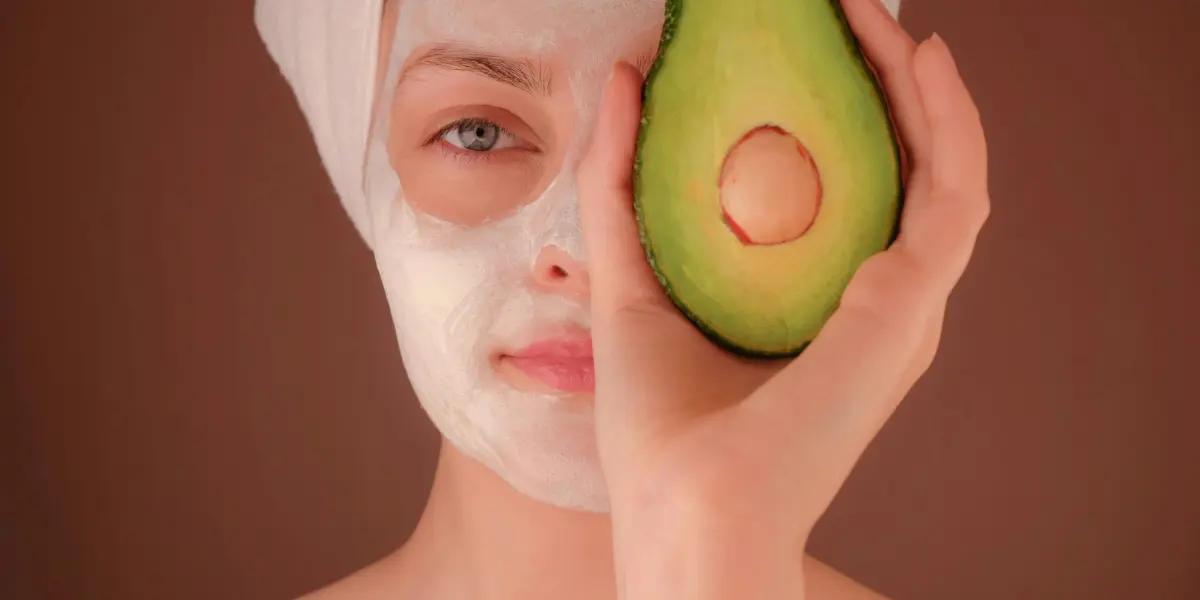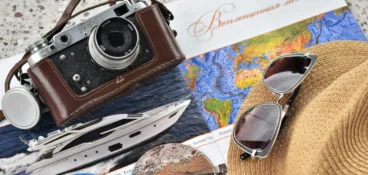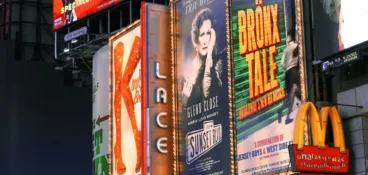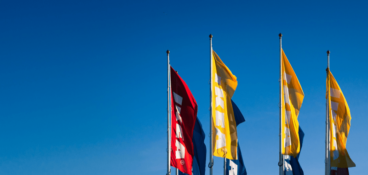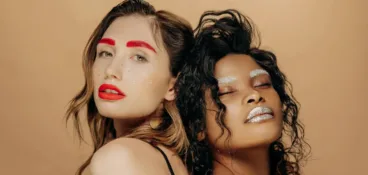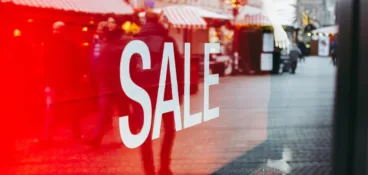The cosmetics industry is up against some pretty big challenges. It’s a highly-regulated industry with strict compliance standards, not to mention high competition.
Needless to say, an advertising faux pas can be costly.
Just ask Lancôme, whose multi-million dollar cosmetics advertising campaign starring Julia Roberts was banned by the Advertising Standards Authority back in 2011.
Aside from losing millions of dollars, a bad advertising campaign can cost you sales, brand reputation, and your market share. Ouch. 😱
I’ve chalked up 10 of the biggest cosmetics advertising fails of all time and the lessons your company can learn from them.
It’s essential reading for cosmetics brands, creative agencies, and QA teams who want to release amazing ads without compliance catastrophes.
10 problematic cosmetics advertising campaigns and what you can learn
Cosmetics advertising is a tricky one. High demand and a fast-moving industry mean your brand needs to put out exciting and disruptive advertising campaigns.
But, strict compliance regulations and the sensitive nature of defining “beauty” can lead even the biggest and best brands to fall on their face.
The good news is that we can learn from these mistakes and make sure our next ad doesn’t fall short. Sort of like a reverse “standing on the shoulders of giants,” if you will.
Here are the 10 biggest cosmetics ad blunders from the last century.
1. Vintage Maybelline ad – when the beauty industry perpetuated gender stereotypes
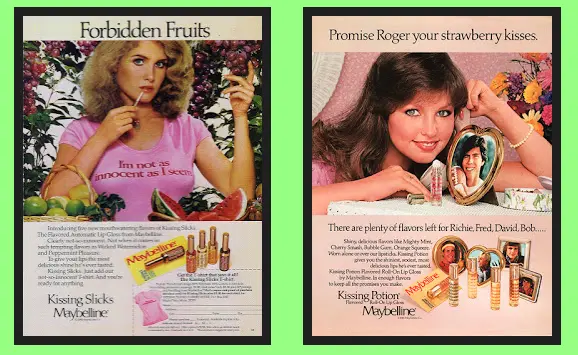
Source: scrippsmediaethics
Times have changed. Advertising regulations are a whole lot stricter than they used to be, and this vintage Maybelline ad is living proof.
The ad harkens back to the seventies and eighties, when advertisers very much subscribed to the idea of “sex sells.” The result was a sea of overly sexualized beauty ads aimed at young girls.
By today’s standards (and advertising laws), this ad uses inappropriate messaging that objectifies women and enforces gender stereotypes.
We see provocative headlines and overly adult messaging aimed at an impressionable young audience. Even the product name, Maybelline Kissing Sticks, is questionable.
Thankfully, Maybelline has evolved over the years, and its current cosmetic ads are a lot more appropriate and empowering.
What went wrong?
Bad advertising with problematic messaging sticks. It seeps into our consciousness and contributes to a wider problem. And even though Maybelline no longer shares these types of ads, they still circulate.
The big lesson here is to avoid flash trends, gimmicks, or shock tactics to sell your products. Long-term brand reputation is all about having a clear point of view, a great product, and a stellar message that resonates with your target audience.
Supercharge your marketing reviews
Share, review, and approve all your content in one place with Filestage.
2. Lancôme’s “Teint Miracle” ad – when the beauty industry faced backlash for airbrushing
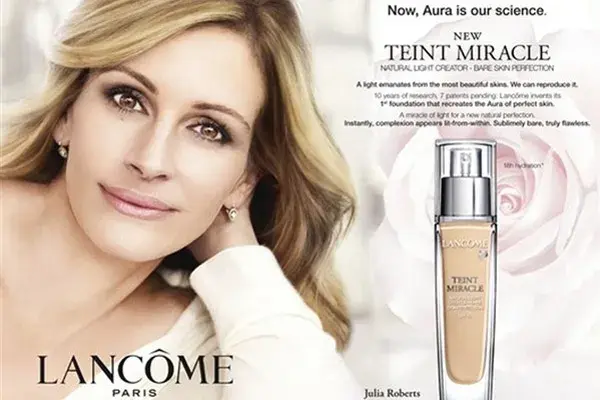
Source: Newsfeed
I think almost every cosmetics company out there would admit to using a little Photoshop in their beauty ads. But where’s the line?
Back in 2011, makeup brand Lâncome crossed it, according to the Advertising Standards Authority (ASA).
Following a complaint from a British member of parliament, the ASA decided to ban the Lâncome ad, which features an extremely airbrushed Julia Roberts.
It cited the reason as excessive use of photo-editing and a misleading representation of the actress. Fellow beauty brand Maybelline (owned by L’Oreal) suffered the same fate with its heavily airbrushed image of Christy Turlington.
The member of parliament who reported the ads had this to say, “Excessive airbrushing and digital manipulation techniques have become the norm, but both Christy Turlington and Julia Roberts are naturally beautiful women who don’t need retouching to look great.”
She went on to add, “This ban sends a powerful message to advertisers – let’s get back to reality.”
This isn’t the first time ASA has intervened in L’Oreal’s cosmetic ads. Back in 2007, it pulled the beauty brand up for a mascara ad featuring Penelope Cruz.
It promised to deliver “up to 60% longer lashes”, but it was later revealed that Cruz was wearing false lashes in the ad. This is one of the most common false advertising examples in the beauty industry.
What went wrong?
Cosmetics and beauty brands are under strict regulatory scrutiny, which means their ads need to be squeaky clean. Any hint of misleading claims or promoting unrealistic beauty standards can land you in hot water.
The lesson here is to prioritize transparency in your ads. That includes being careful about how much editing your images undergo and how visual assets could mislead your audience.
3. Dove’s “Real Beauty” before and after ad – when an inclusive beauty brand misfired

Source: @GNCordova / Via Twitter: @GNCordova
Dove is one of the largest cosmetic companies in the world, known for its empowering marketing campaigns that aim to redefine beauty standards.
Its “Real Beauty” campaign has been a hit since its launch in 2004. It’s widely celebrated for capturing real women and for innovative initiatives like the self-esteem project.
So the world was shocked in 2017 when it debuted a new ad.
The campaign that sent Twitter (now X) alight first appeared on Facebook. It showed a black woman removing her brown t-shirt to reveal a white woman with a beige shirt. The tagline read “visibly more beautiful.”
It was so bad it actually showed up in Google search results as “Dove racist ad.”
Dove said the goal was to highlight how different races benefit from the product. But the message didn’t translate to social media. In fact, many consumers accused Dove of racial insensitivity, comparing it to racist ads from the past century.
Things only got worse when Dove released an apology. Its audience found it inauthentic, causing many customers to lose faith in its message of empowerment.
Dove has since learned its lesson, and its latest ad campaigns truly represent and uplift its audience.
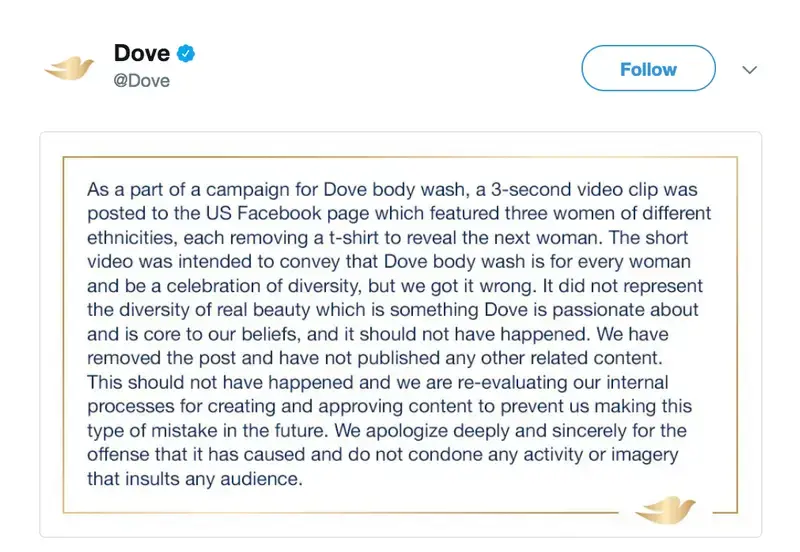
Source: @Dove / Via Twitter: @Dove
What went wrong?
Dove’s intention may have been pure, but this ad harmed a lot of people. The concept began as a TV advertisement, so the messaging was clearer and conveyed the intention better.
But when it was turned into a digital format for social media, the original message got diluted.
It’s a powerful example of how important context is and that not everything translates across different media channels. It also highlights the level of meticulous revision your visual advertising elements need before you sign off on them.
Quality assurance on supporting assets like social content is often overlooked compared to “big ticket” materials like print and TV. The results, as we see here, can be damaging.
4. Nivea’s “White is Purity” ad – when beauty brands are tone deaf

Source: BBC News
2017 was not a good year for cosmetics ads.
German skincare company Nivea released a problematic social media ad promoting its “Invisible for Black and White” deodorant. But, the ad copy got people’s backs up. And for good reason.
The copy read “White Is Purity,” and the post was captioned, “Keep it clean, keep bright. Don’t let anything ruin it”.
Now for some context.
The social ad was targeting a Middle Eastern audience, which raised even more concerns about the potentially harmful messaging. Many people took aim at Nivea for making a racist association between white skin and purity.
In response to the controversy, the skincare giant pulled the ad and issued an apology. It was planning a large-scale print campaign using the design, but wisely chose to scrap this following the complaints.
This isn’t the first time Nivea has come under heat for offensive and racist advertisements.
Its 2011 ad campaign for its men’s line stirred up controversy thanks to the culturally insensitive tagline “Re-Civilize Yourself.”
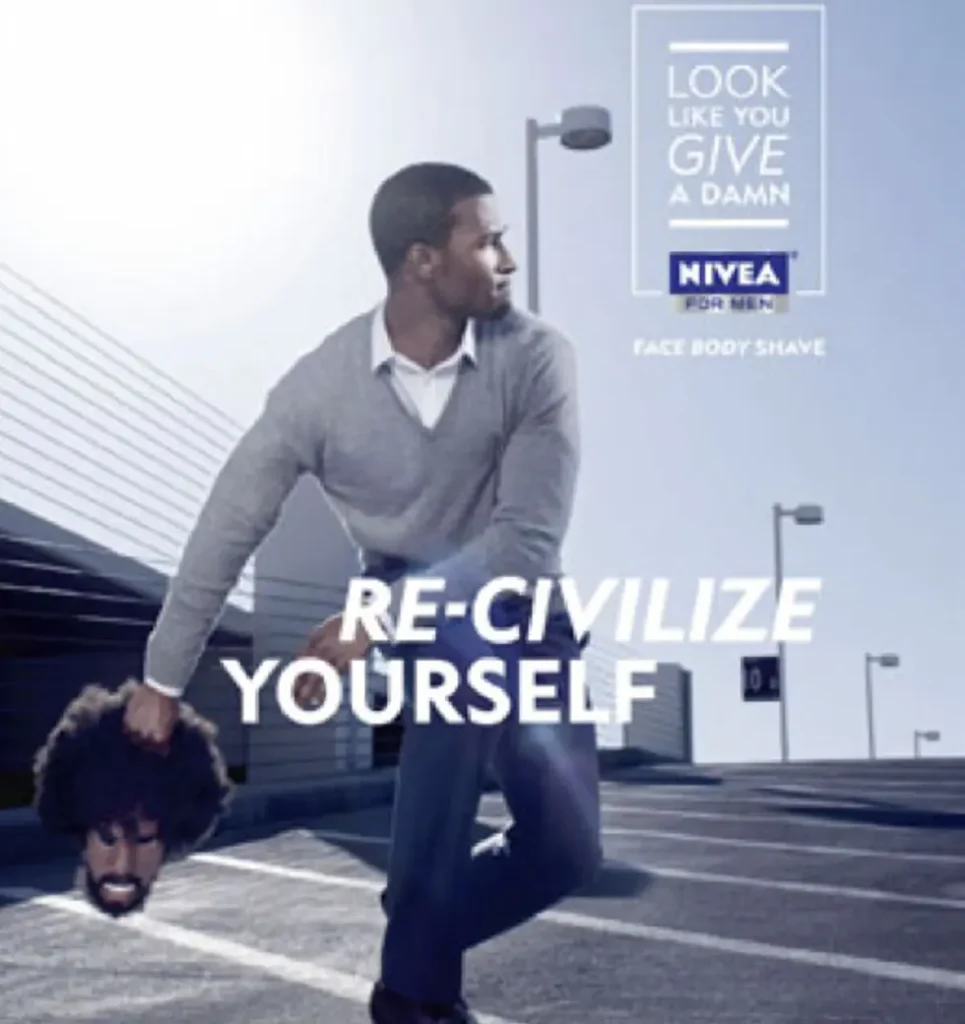
Source: AdWeeks
What went wrong?
Nivea failed to test its marketing materials with a diverse group before launching its large-scale campaign. As a result, it missed a glaringly obvious issue with its copy.
It also failed to understand the deeper cultural implications of the ad copy for its Middle Eastern audience. Proper testing and thorough research into the local culture of its target market could have prevented this disaster.
5. Dior’s “We Are the Land” film – when advertising strategies go wrong
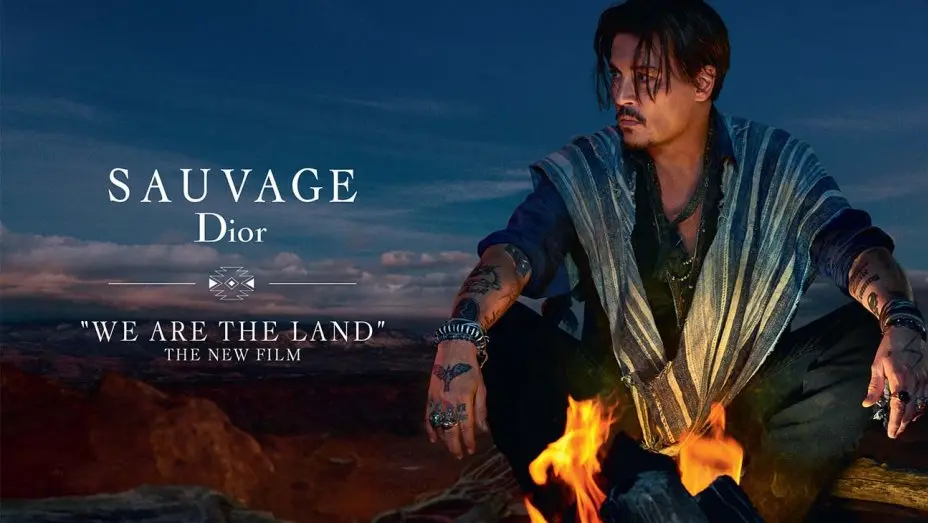
Source: JimJoesph.com
Unless you’ve been living under a rock, you’ve probably seen at least one of Dior’s Sauvage fragrance ads featuring Johnny Depp.
The brand has a long-standing relationship with the actor, and the advertisements are pretty famous for their mystery and earthy allure.
But one ad in particular left the public shocked.
Its 2019 short film “We Are the Land” caused all sorts of controversy thanks to its use of Native American stereotypes.
In a teaser on Twitter, it described the ad as “an authentic journey deep into the Native American soul in a sacred, founding and secular territory.”
Dior received a lot of heat for the social media ad, with critics accusing the brand of cultural appropriation and racism.
In an interview with the Guardian, Crystal Echo Hawk, CEO of the media watchdog group IllumiNative had this to say:
“It is so deeply offensive and racist. I don’t know how anyone in 2019 can think a campaign like this can go down well.”
This isn’t the first time Dior has faced backlash for its use of Native American tropes in its ad campaigns.
What went wrong?
Despite Dior’s attempt to work with Native American consultants and advocacy groups, it failed to understand the nuances of the symbolism it used.
Its intention may have been to “avoid the cultural appropriation and subversion that so often taints images representing Native peoples,” but it did the opposite.
This goes to show how important it is to collaborate with cultural representatives to avoid appropriation or stereotyping.
6. Lush’s “Spycops” ad – when cosmetics companies get too political
Lush is a great cosmetics brand with strong values and positioning. It’s known for its cruelty-free products, sustainable packaging, and social activism. A liberal’s dream.
But 2018 saw the usually pitch-perfect brand falter.
It released its “#Spycops” video campaign in a bid to spotlight the alleged illegal behavior of undercover police officers in the UK.
Cue a Twitter storm and the trending hashtag #flushlush.
Even the UK home secretary weighed in, criticizing the ad campaign. Lush responded with a statement clarifying that the ad was aimed specifically at the undercover unit, not regular police officers. But it wasn’t enough.
Reports began emerging of police officers and members of the public flocking to Lush stores to intimidate staff. Thanks to this, the owners decided to remove the controversial window dressings.
What went wrong?
This is a tough one. Lush is a brand built on social activism, and the backlash from the campaign is reported to have actually increased sales. Why? Because the commercial aligned with its target audience’s beliefs.
That said, the widespread backlash did put its workers at risk and many members of the public misconstrued its message. For next time, more clarification could prevent this.
7. Gillette’s “We Believe: The Best a Man Can Be” ad – when cosmetics brands alienate their core audience
Back in 2019, in the wake of the #metoo movement, men’s cosmetics brand Gillette attempted to address toxic masculinity with its new ad.
The short film played on the brand’s iconic slogan, “The best a man can get,” and was all about men holding each other accountable.
The result was an extremely divided public.
It garnered a huge number of views and high praise from some members of the public. But, many others were not happy, some claiming that the brand’s slogan was dead to them. Notorious British journalist Piers Morgan even said he would boycott Gillette because of the ad’s messaging.
The advertisement shows scenes of toxic masculinity and asks the question, “Is this the best a man can get?”
We then see more positive behavior, like men stepping in to stop their friends from behaving in a toxic way in public.
According to BBC News, the ad was deemed “feminist propaganda” by some angry viewers. Here’s what one had to say: “In less than two minutes, you managed to alienate your biggest sales group for your products. Well done.”
What went wrong?
Was Gillette’s ad a fail? Personally, I don’t think so. But I’m also not Gillette’s target audience.
That’s where the issue lies.
The intention behind Gillette’s message may have been pure, but it alienated many of its target audience, accusing them of toxic behaviors. This shows branding misalignment.
There’s also a lack of nuance, as the ad didn’t show any positive aspects of masculinity. For this message to hit home, I think Gillette needed to show both sides of masculinity and have a clearer message of empowerment.
8. Fenty Beauty’s attempt at cracking the Chinese market – when a brand’s marketing strategies fail to launch
Fenty Beauty is one of the most popular beauty brands for a reason. It’s disruptive, inclusive, and headed by singing sensation Rihanna.
Despite its immense success in the US and Europe, the brand’s 2019 attempt to crack the Chinese market didn’t garner the same results.
But why?
According to a USC Annenberg article, its marketing strategy just didn’t resonate with Chinese consumers. Fenty Beauty’s marketing strategy focuses on inclusivity and diversity. But, this didn’t have the same impact on a Chinese audience, where lighter skin remains the beauty standard.
The makeup giant also prides itself on its cruelty-free cosmetics. But, its products had to go through animal testing to enter the Chinese market.
An interesting article in Jing Daily points out why this may have impacted Fenty Beauty’s success.
According to the author, Chinese cosmetics consumers are, “concerned more about whether cosmetics are natural, green, or organic due to the rising of environmental pollution issues, such as the haze.”
What went wrong?
Fenty Beauty’s setbacks highlight the importance of understanding the cultural and social factors at play in a new market.
This cultural misalignment could suggest the brand needs a completely different marketing tactic to connect with Chinese consumers. Or it might be a sign that entering the market is too risky if the brand’s core value proposition isn’t marketable to this audience.
9. Rimmel London’s “Back-To-School Season” ad – when beauty brands miss the mark with their messaging
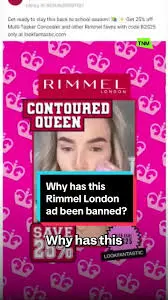
Source: TikTok
In 2023, Rimmel London released a Facebook ad featuring influencer and Love Islander Lana Jenkins.
The ad showed Lana applying makeup with the following caption: “Get ready to slay this back-to-school season. Get 25% off Multi-Tasker Concealer and other Rimmel faves …”
The ASA quickly intervened and banned the ad for “playing on young girls’ insecurities about their appearance.”
The regulator said the ad implied that viewers needed to wear makeup at school to succeed. It went on to add that the words “back-to-school season,” along with the pink color scheme and star emojis, would appeal to young girls.
Rimmel London was banned from showing the ad again.
What went wrong?
In response to the ban, Rimmel London claimed it was targeting “women aged 18 to 35 who were interested in cosmetics, beauty, fashion, and makeup.”
This goes to show what happens when your ad copy and messaging don’t align with your target audience.
10. Wild Cosmetics’ “Wild Natural Deodorant” ad – when cosmetics brands take aim at their competitors
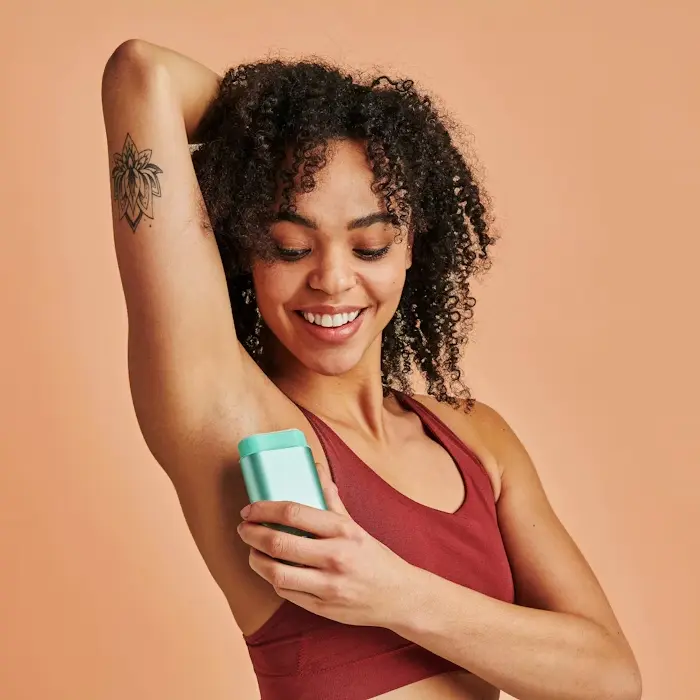
Source: Wild Cosmetics
Wild Cosmetics is popular for its sustainable, natural deodorants and its fun (sometimes controversial) ad campaigns.
In 2023, the ASA flagged its latest YouTube commercial, banning it from appearing in its current form.
The ad campaign shows models applying conventional deodorants before throwing them aside. The ad claims these spray-on deodorants cause itchiness, body odor, and hormonal imbalances.
The voiceover says, “Your pores get clogged with all the sweat and toxins that your body is supposed to release, so you can end up with itchy armpits, and rashes and body odor.”
Viewers complained, accusing the ad of being misleading and of making comparative claims. ASA agreed and ruled that Wild needed proper scientific evidence to prove its claims that other deodorants were harmful to our health.
The brand also came under fire just a few months before this, after its provocative ad aired on a YouTube channel for children.
What went wrong?
Slating other brands or products in your ads just doesn’t go down well. Especially if you don’t have the scientific evidence to back up your claims.
Cosmetics advertising lessons to put in your back pocket
As you can see from the examples above, even some of the biggest cosmetics, hair care, and beauty brands in the world still have a lot to learn about inclusive advertising strategies.
So, what are the biggest tips we can take away from these examples? I’ve rounded them up below.
1. People love transparency
Research by Stakla shows that 88% of consumers think authenticity is important when choosing which brands to support.
We live in the age of ad distrust. Nobody (especially Gen Z) trusts traditional ads anymore, meaning cosmetics brands need to work hard to build audience trust and authentic relationships. This starts with clear messaging to avoid misinterpretations.
You’ll also need to toe the line between staying current with the latest beauty trends and avoiding fads that could hurt your brand long-term.
Aim for trend-aware rather than trend-obsessed.
Learn from Lancôme’s mistake and leave unrealistic beauty standards, puffed-up claims, and seriously doctored imagery to the amateurs. Honest, data-backed cosmetics ads are in.
2. Keep your finger on the pulse
Listen, cultural references are great when done right. But when they go wrong, they can blow up in your face big time. Case in point, that Pepsi ad with Kendall Jenner. 😖
The best way to stay on the right side of the cultural zeitgeist is to keep your finger on the pulse. Your creative teams need to be paying attention to current events, customer sentiment, and the cultural temperature.
Then adjust your ad campaigns accordingly.
We’ve seen it time and time again (including multiple times in this list). Brands create cosmetics advertising campaigns with the best of intentions, but fail to consider the racial and cultural implications.
You can avoid this trap by carefully considering your audience, the market, and how your ad campaign translates at this particular moment in time.
Representation is another huge part of this. Many of the examples on this list are caused by racial ignorance or a focus on Euro-centric beauty standards. So the best way to address this is to build creative teams that represent diverse consumers.
Remember, one bad ad can have a long-term negative impact on your brand (and audience). Just ask Maybelline.
3. Invest in thorough testing and feedback from diverse users
If Rihanna’s hugely successful beauty brand can mess up, the sad truth is so can we all. Fenty Beauty’s unsuccessful attempt to break into the Chinese market is a good example of how even the best messaging can fail if it doesn’t resonate with your audience.
Fenty’s messaging is strong. It champions inclusivity and cruelty-free beauty products. And for most of its audience, this is a home run.
But as we saw, it just didn’t hit home for its Chinese audience. Now I’m not saying Fenty Beauty should change its messaging or values, but thorough user research in this market may have highlighted these discrepancies sooner.
The best trick to spot potential advertising or messaging issues is to run thorough testing and gather feedback from a diverse user group. After all, the only way to know how different audiences will react to your ad is to test it in front of them.
4. Create an airtight creative review and approval process
Mistakes happen. Messaging gets misinterpreted. Brands miss the mark.
That’s just the way things go in the fields of marketing and advertising. But that doesn’t mean you can’t protect yourself and your business.
Your creative review and approval process is the missing piece of the puzzle.
An effective creative operations workflow can cut the review process down by as much as 30%, allowing you to increase productivity and accuracy at the same time.
It all starts with a robust online proofing platform. The right tool streamlines creative collaboration, promotes accountability and transparency in the review process, and ends versioning chaos.
You can create custom reviewer groups to make sure all key stakeholders (legal, compliance, etc …) review and approve your advertising materials at the right stage of the process.
For example, with Filestage, you can:
- Optimize your creative review and approval process for faster results and fewer errors
- Consolidate feedback in one centralized place, making sure every team member’s voice is heard
- Maintain fast turnaround on creative projects while keeping accuracy high
- Strike the balance between creative campaigns and compliance 💡
- Compare document versions to visualize changes to advertising materials (our integrated AI tool acts as a second set of eyes)
- Create a secure and efficient process for gathering creative feedback and spotting potential issues
Supercharge your marketing reviews
Share, review, and approve all your content in one place with Filestage.
Cosmetic advertising FAQs
What are the biggest mistakes cosmetics brands make in their advertising strategies?
Here are some reasons why cosmetic brands miss the mark with their beauty marketing:
- Misaligned or misleading messaging
- Not knowing their audience
- Ignoring the cultural and racial implications of their ads
- Relying on gimmicks and flash trends that don’t align with their brand’s essence
What are the biggest trends in cosmetics advertising in 2024?
These are the biggest trends cosmetic brands are tapping into this year:
- User-generated content to promote their cosmetic products
- Eco-friendly packaging and clean beauty products
- Inclusive ads with true representation and a focus on natural beauty
- Many cosmetics brands are using emotion-driven storytelling in their ads
Next steps
I hope these cosmetics advertising blunders have shown you what not to do in your next campaign. While everyone makes mistakes, these kinds of advertising missteps can seriously dent your brand reputation, sales, and longevity. Not to mention cause serious offense to your audience.
Attack is your best form of defense here. Don’t wait for an issue to be flagged, build an impenetrable review and approval process now to make sure no clangers slip through the net.
Implementing a collaborative proofing platform like Filestage can help you achieve this. That way, you have the piece of mind that all your packaging, in-store displays, and other advertising materials have undergone thorough review from all major stakeholders before sign-off.
Ready to crack down on your advertising review and approval process? Get your free Filestage trial today.

